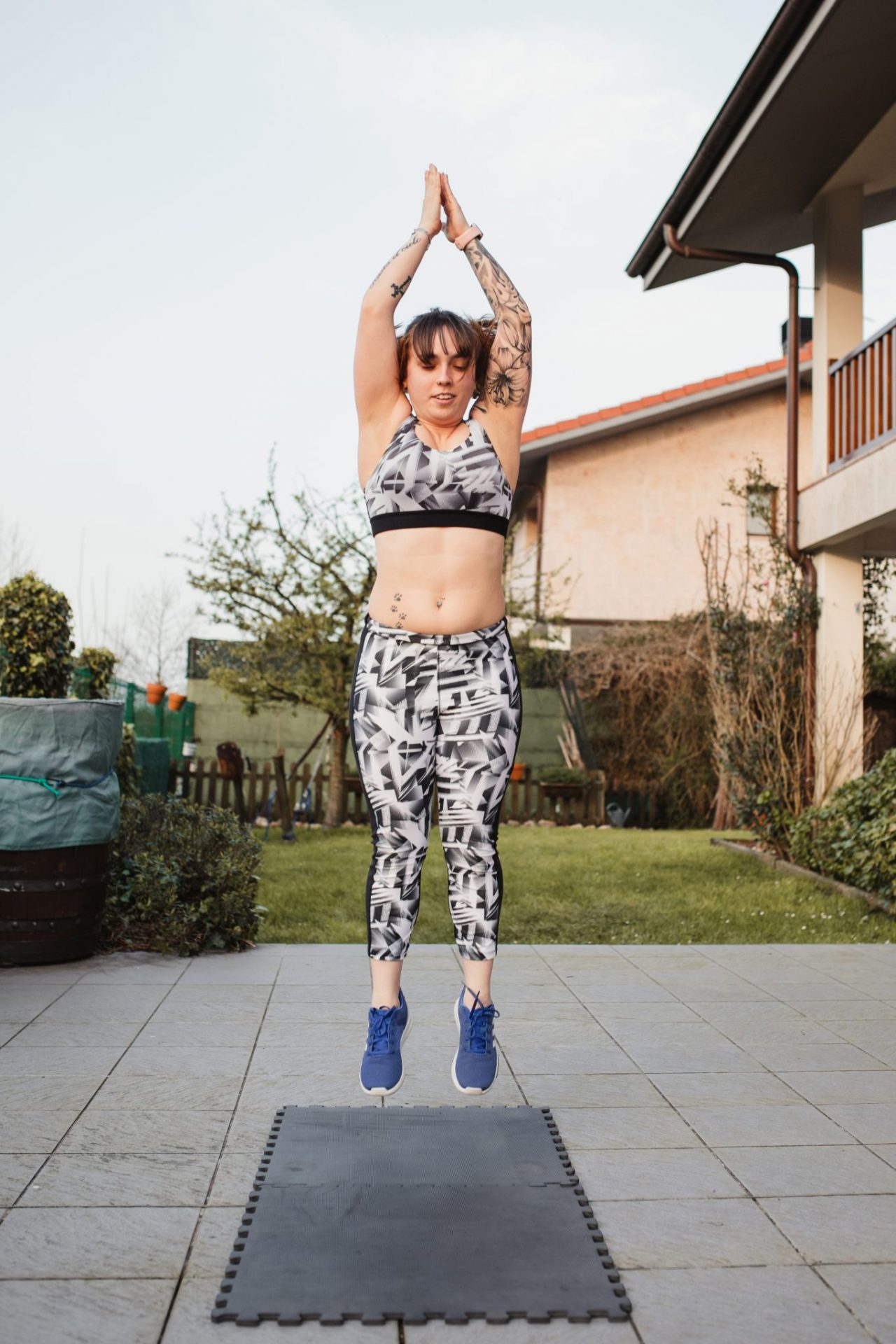Burpees are a tough bodyweight exercise, which makes them perfect for home workouts. Here’s how to do them correctly for optimum impact.
How do you feel when you hear the word burpee? Do you shudder? Do you feel slightly sick? Although they’re a bodyweight exercise, burpees are tough.
The reason we dread them so much? “They require the use of the majority of our muscle groups in order to be performed correctly and safely,” explains Amber Gamble, a trainer at F45 Chelsea. That doesn’t mean we should neglect them, but it does mean we should pay attention to how they’re performed.
In fact, burpees are actually great for us and our fitness. “They’re generally programmed within HIIT sessions as you don’t need to do them for long to reap the rewards. Just a few rounds of 30 seconds can be enough to get the average person’s heart rate into their highest zone, which will help to optimise performance as you are training your heart to maintain or improve its max threshold,” Amber explains.
You may also like
Cardio workout: make running feel easier with endurance training
As with every exercise, we should start with the easiest variation and work our way up to the toughest. The good news is that there’s a whole host of different ways to burpee depending on how hard you want to push it, from half reps to burpees with a press-up. And remember, modifications aren’t just for beginners, but also for anyone suffering from an injury or pain, or simply just tired from a tough workout.
“My general advice to those who suffer from knee injuries or pain is to cut out the jump part of a burpee and instead step in and out of the movement,” says Amber. “This will avoid too much impact and strain through the knee and will encourage you to focus on using your quadriceps and core to move back into a high plank position.”

Annoyingly for anyone just wishing to get burpees over and done with as quickly as possible, the key to doing them right is to be completely and utterly in control. “For those with lower back niggles particularly, it is hugely important to control your body down to the ground during the chest to floor variation,” says Amber. “Avoid your hips dropping down to the ground before the rest of your body by focusing on our core activation and upper body strength, specifically the chest and the triceps. That way, you avoid repeatedly compressing the vertebrae in the lower spine.”
How to do burpees
Let’s start with the classic burpee. For this, it requires going from high plank to the floor, then up to standing with a jump.
- Place the hands down onto the ground and jump or step back to a high plank position.
- With control, lower your body all the way down to the ground.
- Use upper body and core strength to press back up to a high plank.
- Jump your feet back into your hands.
- Lift your body back up to standing by jumping or stepping.
You may also like
Plank variations to strengthen all of your core
But the burpee possibilities don’t end there. You can make it tougher by adding in a press-up to step two and three to isolate the upper body muscles. You can also lift one leg off the floor when moving through the movement. This puts extra resistance through the quad and glute on the side that pushes you through the movement.
Burpee regressions
However, it’s not all about making the burpee tougher. When you need to take things down a notch, here are some ways to regress the movement:
- Slow your pace to focus on engaging the correct muscles. The move will then become more about strength than cardio.
- Cut out the jump parts of the movement.
- Cut out the chest to floor and go down to high plank then straight back up.
Follow @StrongWomenUK on Instagram for the latest workouts, delicious recipes and motivation from your favourite fitness experts.
Images: Getty
Source: Read Full Article
